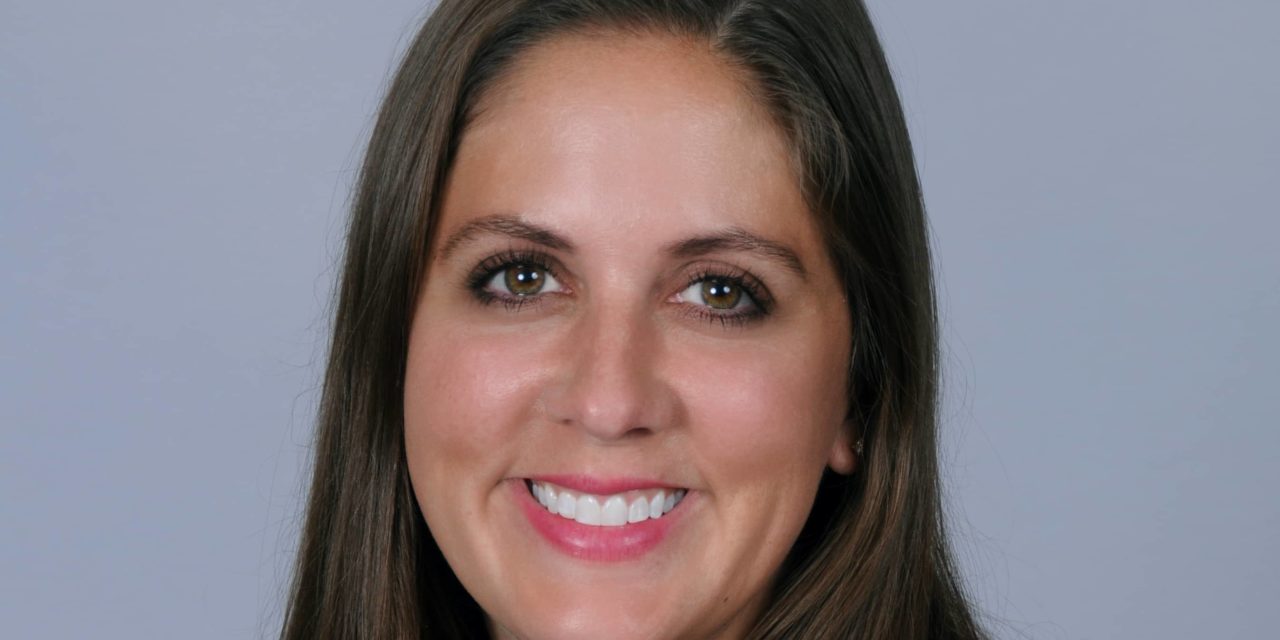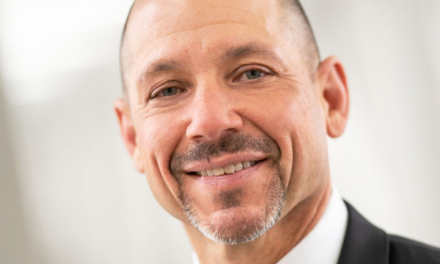
Wisconsin Collaborative for Healthcare Quality targets health disparities, obesity

A year ago last week, Gabrielle Rude took the reins of the Wisconsin Collaborative for Healthcare Quality amid the COVID-19 pandemic.
“It certainly wasn’t what I expected to start my first year as CEO,” Rude said in a recent interview.
Rude previously directed clinical practice transformation at the collaborative. Before that, she worked at Monroe Clinic, the University of Wisconsin and Dean Health Plan.
Rude gave an update on how the pandemic has affected quality efforts and various projects the collaborative is moving forward on.
Edited excerpts are below.
WHN: How has the pandemic impacted quality efforts?
GR: We saw very quickly in the pandemic that the people we normally reached out to to get data from, that worked with us to measure where are opportunities for improvement, they were very focused on pulling data to share with their local municipality, with the White House and internally to figure out this pandemic. So it caused some delays in the work that WCHQ was used to doing and, I think, was even more critical as we were trying to understand a pandemic. We needed that data more than ever. So it did delay some of our priorities and work as a state.
That said, I think Wisconsin is unique in that we have this voluntary collaborative. In other states, they don’t have a collaborative like ours or it may not be voluntary. So that spirit of prioritizing quality in Wisconsin is very strong. We did see members prioritize quality very quickly. They didn’t put it aside. But it did require us to be more selective about the projects that we wanted to work on. So picking projects that had the largest number of members that were engaged, that had the most patients that we could impact, whereas in normal years, we might have had freedom to pick some smaller or pet projects. That was not possible over the last year.
WHN: What was the pandemic’s impact on healthcare quality?
GR: I hope a huge lesson that we have out of this pandemic is that preventative care or non-urgent care are really misnomers that should not be confused with non-necessary care. So our health systems have been really trying to push this message lately.
I am very concerned about the delayed and avoided care. Our health systems are struggling to get patients back in for the care that they need now, and they have a lot of catching up to do. We really don’t know how big the impact is going to be long term. But services like life-saving immunizations for children, colon cancer screening and other cancer screenings – these are necessary services that patients need. And delaying that care, we know through some evidence that we already have, but we also believe based on how important these services are, is going to have big impacts on the individual patients’ outcomes, but also the costs of healthcare long term.
WHN: The collaborative is working with the University of Wisconsin School of Medicine and Public Health, the Medical College of Wisconsin, the Wisconsin Health Information Organization and Marshfield Clinic Research Institute on a health disparities study. What’s involved?
GR: It’s a three-year project. And our overall goals are to address healthcare disparities, of course. But WCHQ’s specific role in the initiative is that we start first as a convener to bring health systems together to agree upon common priorities. We actually have a disparities summit for executives coming up next month where we’ll be bringing leaders from all of our health systems together to talk about disparities. And then we use our data, which all of our health systems submit, to identify where there are opportunities for improvement. And in Wisconsin, we’re doing that on a variety of disparity measures … racial, which is absolutely an important part of it, but we’re also looking at geography. We saw in our first report that where people live and what access they have to healthcare can have a significant impact on their health outcomes. We also have payer types. So what type of insurance they have or if they have no insurance can be real markers for the outcomes that they have.
And so we’re looking at Wisconsin communities, which are all unique. And the disparities that exist in one region don’t exist in others. So our role is identifying those disparities. And then we will be bringing together improvement teams over the next three years to identify strategies for improvement and then to be able to disseminate those for other organizations so we can have a reduction in healthcare disparities.
WHN: The collaborative, with support from the Advancing a Healthier Wisconsin Endowment, is working with providers throughout the state on integrating behavioral health with primary healthcare. How is that going?
GR: This project is pretty early in its inception, but we have extreme enthusiasm for the project. We have nine health systems signed up to participate. It relates to integrating behavioral health in primary care, which is a strategy we have been working on for several years under our value umbrella, in that by providing this care in the primary care setting, patients can get needed interaction with mental health providers, right then when they’re in there with their primary care provider. That’s been shown to improve patient outcomes, but it’s also extremely cost effective.
We have member health systems at all different places in their integration. Some have no integration, and others have integration at a few locations. Then we also have the added complexity that that integration at a large academic medical center might look really different than integration at a rural clinic with only one medical provider, where it might not make sense to physically co-locate a mental health provider in the clinic. So it takes resources to figure out what is the strategy that can bring mental health services into primary care, with the goal being primary care can take care of more patients with mental health issues if they have the support of a mental health provider. So rather than referring a patient out to later get an appointment with their short-staffed mental health providers, they can stick their head in the door right down the hall and say, ‘Hey, I have this patient, what do you think I should do?’ or, ‘Can you come see this patient right now?’ and get a care treatment plan in place right then and there when the patient came in for primary care services.
WHN: The collaborative is working with Novo Nordisk on a project targeting obesity. What impact do you expect that to have?
GR: We’re very excited about being able to tackle the obesity epidemic. This has been a topic that we’ve talked about for years in our various chronic disease initiatives, given that every clinical provider knows that obesity can lead to other chronic diseases. That said, it’s incredibly complex to address this epidemic both because payment for obesity prevention services vary widely between insurance coverage as well as stigma associated with patients that have obesity. Medical providers have needed help to communicate with patients and talk about it as a disease. But we also know that in the community, we want other people to see that obesity is not something that a person chooses to have. It’s not something that is to be made fun of. It’s actually a disease that requires medical intervention and really holistic care to successfully intervene.
So the project is just starting, but we have incredible engagement across our entire WCHQ membership. We also have engagement from payers and organizations that are working with employers, starting to talk about how could we standardize what services we’re covering for obesity care because that adds an incredible level of complexity for a medical provider when they have to determine what recommendations not only are clinically right but which will be affordable or covered for that patient. To add that layer of difficulty for a patient can be a real barrier to them getting the treatment that they need. We also know that we want to be prudent about it. We’re not trying to recommend the most expensive treatment for every patient. So working collaboratively with the purchasers and payers along with the clinical care team, we think we can figure out some strategies that are effective at helping patients reduce obesity.
And then our ultimate goal is we would like to see not only a reduction in obesity, but a reduction in the associated chronic conditions that stem from that. This has immense potential in the impact it can have for Wisconsin. And we’re just getting started.
WHN: Where does the work with oral healthcare stand?
GR: This would be an example, in terms of engagement of oral health providers, where recruitment of new participants is difficult during a pandemic. We are just looking ahead in the next year to start bringing more oral health providers into our membership and hopefully submitting data for improvement. That said, we’re not just opening up and asking anyone to join. Because at a formational stage, we know it’s really important to have thought leaders and organizations that not only want to benefit from participation, but who also want to have a hand in shaping how this collaborative works. And we are the first oral health collaborative in the nation. So we have no road map for how we’re going to do this work.
We still have the same members within our organization, and they are regularly submitting data to WCHQ. And the most exciting thing that they’re working on right now is that they are trying to build a measure that would bring both oral healthcare, or dental data, together with medical care data, the thinking being that patients who have certain chronic conditions, for example diabetes, there is overlap between oral healthcare and what happens in the medical facility. We’re all familiar with emergency department usage for dental pain, but beyond that dental providers are actually in a great position to talk to patients about inflammation and other body processes that are actually related to their chronic condition. We even have dental health providers who are interested in talking about immunizations, and in some states, are giving immunizations. Our oral health providers are very focused on using data to show that connection. Because for WCHQ, we like to lead with our data first. So talking about why this is important is one thing we can do. But when we show data, and we can show a connection between a patient that’s seen in an oral health provider or medical provider and ideally show improvement on their disease status through that measure, we know that we are going to get more engagement and more participation. So we will be releasing more data from our oral health providers very soon.





